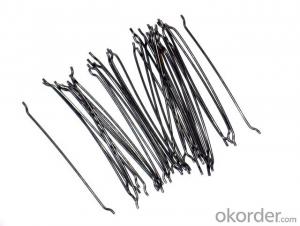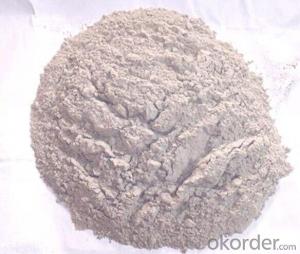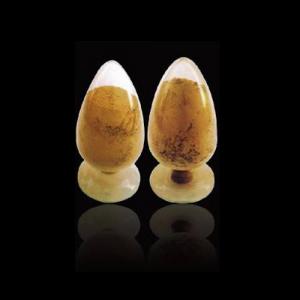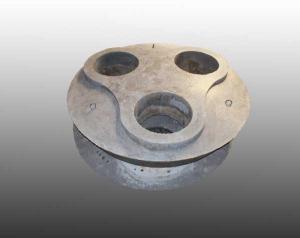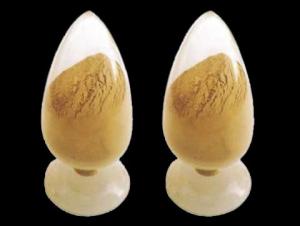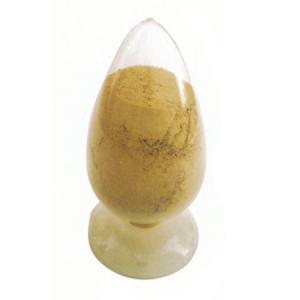Raw Carbon Material Made By Carbon Filler
- Loading Port:
- China main port
- Payment Terms:
- TT or LC
- Min Order Qty:
- 20 m.t
- Supply Capability:
- 1000 m.t/month
OKorder Service Pledge
OKorder Financial Service
You Might Also Like
Calcined Petroleum Coke
FC:98.5%min,
S:0.5%max
A:0.8%max
V:0.7%max
Mositure:0.5%max
Size:1-5mm
Technology:
Laborary Equpment
In our lab,we has a high precision balance,mullfe furnace,sample making machine, dring box,sulfur measurement instrument and other calibratiing equipments.As a result,before deliverung to our customers,our products have to pass a strict test to ensure the quality and components.The testing reports will be sent to our customers to confirm untill they satisfy with it.
Packaging & Delivery
Packaging Detail:25kg paper bag into 1t weaving bag 5kg, 10kg and 20kg weaving bag into 1t weaving bag 25kg weaving bag put on pallet covered with entanglement wrap product direct into packing bag 25kg paper bag put on pallet covered with entanglement Wrap 25kg weaving bag into 1t weaving bag.
Delivery Details: 7 days

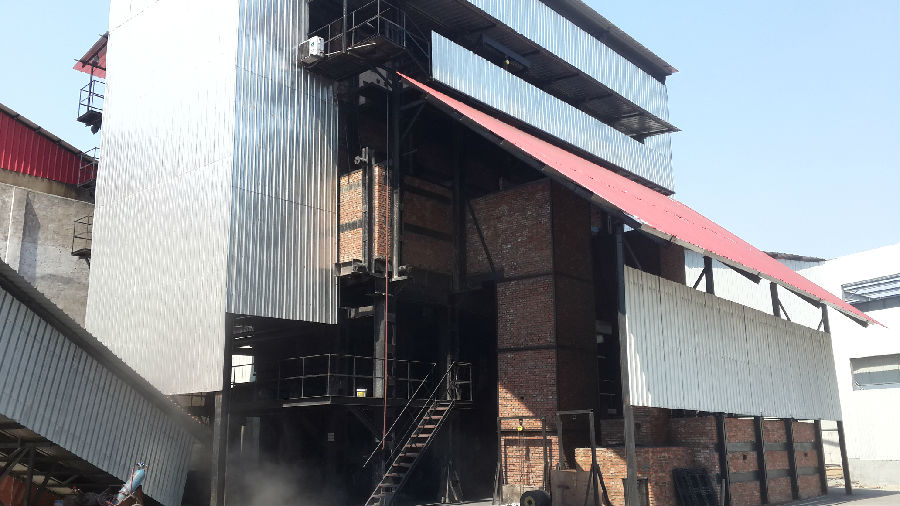
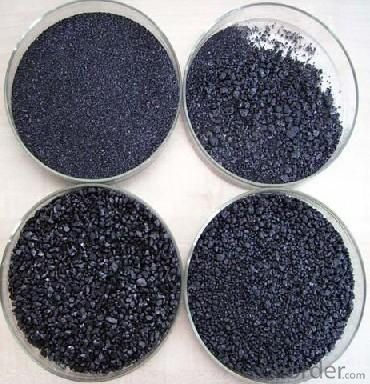
Factory Background
The factory is majorly running and operating carbon additive (pitch coke, calcined petroleum coke and anthracite), low nitrogen carbon additive, and brake pad making material. Company is the long term supplier of Sinosteel Corporation, Shanghai Carbon Corporation, the plant of SGL Group the Carbon Company in China and some largest special carbon products producing plants.
YUAI also supplies huge amout of high quality carbon additive and graphite carbon additive to steel plants, foundries and ferrotungsten plants. YUAI has been assigned by BAO STEEL as the only organization for processing pitch coke for export purpose. The group’s major products are constantly exported to Japan, Korea, Malaysia, South East Asia countries, Europe and America, which receive praises by our consumers.
The group has invested numbers of calcinators in Anhui China to ensure the capability of producing and processing huge amount of carbon additive. Further investment is on process. According to the orders from customers, YUAI is able to processing and providing different specifications of carbon additive and other products. To provide best quality of products and to offer customers most satisfied service is YUAI’s operating objectives.
Our Service:
1. Your inquiry related to our products or prices will be replied in 24hours.
2. Manufacturer with large capacity, ensure the fast production cycle after confirmed the order.
3. Our professional technicians will answer your entire enquiry in patient.
4. To meet the refractory solutions, we can serve as your instructions.
5. Protection of sales area and private information for our entire customer.
If you’ve kind enquiries, please don’t hesitate to let us know. ^_^
- Q:How do monolithic refractories improve the quality and consistency of iron and steel products?
- Monolithic refractories play a crucial role in improving the quality and consistency of iron and steel products. These refractories are unshaped and can be easily molded and installed, providing several advantages over traditional brick refractories. Firstly, monolithic refractories offer better thermal insulation properties, ensuring effective heat management during the production process. By maintaining consistent and controlled temperatures, these refractories prevent thermal shocks and minimize thermal gradients, leading to reduced cracking and distortion in the final products. This results in improved dimensional stability and overall better quality. Furthermore, monolithic refractories have excellent resistance to thermal spalling and erosion. They can withstand high temperatures, chemical attacks, and mechanical stress, protecting the lining of the furnaces and vessels used in iron and steel production. This resistance enhances the durability and reliability of refractory linings, preventing premature failure and extending the lifespan of the equipment. Another advantage of monolithic refractories is their ability to provide a seamless lining. Unlike brick refractories, which have joints and gaps that can lead to heat loss and uneven distribution, monolithic refractories create a continuous lining with no weak points. This ensures uniform heat distribution and minimizes the risk of hotspots or cold spots, resulting in consistent and reliable iron and steel products. Monolithic refractories also offer flexibility in design and installation. They can be customized to fit various shapes and sizes, allowing for better furnace design optimization. This flexibility enables efficient use of space, improved heat transfer, and reduced energy consumption, all of which contribute to the overall quality and consistency of the final iron and steel products. In summary, monolithic refractories improve the quality and consistency of iron and steel products by providing superior thermal insulation, resistance to thermal spalling and erosion, seamless linings, and flexibility in design and installation. These refractories enhance the efficiency and reliability of the production process, resulting in higher-quality final products that meet the industry's stringent standards.
- Q:How do monolithic refractories contribute to the reduction of heat loss in iron and steel plants?
- The unique properties and application methods of monolithic refractories are crucial in the efforts to minimize heat loss in iron and steel plants. These refractories consist of single, continuous materials without joints or seams, providing exceptional thermal insulation and reducing heat transfer. A key factor in the reduction of heat loss is the low thermal conductivity of monolithic refractories. These materials possess a high resistance to heat flow, effectively preventing the loss of thermal energy from furnaces, ladles, and other equipment used in iron and steel production. By creating a barrier between the hot interior and cooler surroundings, monolithic refractories effectively minimize heat escape and maintain a stable and efficient thermal environment. Furthermore, monolithic refractories are known for their excellent adhesion and strength, allowing them to form a tight seal and eliminate gaps or cracks in equipment linings. This prevents the entry of cold air and the escape of hot gases, further reducing heat loss and ensuring optimal operating temperatures are maintained. Another advantage of monolithic refractories is their ease of application and repair, leading to a more efficient and cost-effective maintenance process. Regular inspections and repairs can address any wear or damage to the refractory lining, ensuring optimal performance and minimal heat loss over time. In conclusion, monolithic refractories significantly contribute to the reduction of heat loss in iron and steel plants through their low thermal conductivity, excellent adhesion, and high strength. By effectively insulating equipment and preventing heat escape, these refractories promote energy efficiency and productivity in the iron and steel industry.
- Q:How do monolithic refractories enhance the performance of ladle and tundish covers?
- Monolithic refractories play a crucial role in enhancing the performance of ladle and tundish covers in several ways. Firstly, monolithic refractories offer excellent thermal insulation properties. Ladles and tundishes are exposed to extremely high temperatures during the steelmaking process. By using monolithic refractories, the covers can effectively trap and retain heat, preventing excessive heat loss. This insulation capability not only helps to maintain the desired temperature of the molten steel but also reduces the energy consumption required for heating. Secondly, monolithic refractories provide superior resistance to thermal shock. When ladles and tundishes are filled with molten steel, there is a rapid and drastic temperature change in the refractory lining. This thermal shock can cause cracking and spalling of the lining, compromising its integrity. However, monolithic refractories possess high thermal shock resistance, allowing them to withstand these sudden temperature fluctuations without significant damage. This ensures the longevity and durability of the ladle and tundish covers. Furthermore, monolithic refractories exhibit excellent corrosion resistance. The molten steel and other aggressive chemicals present in the ladles and tundishes can erode the refractory lining over time. However, monolithic refractories are specifically designed to withstand these corrosive environments, protecting the covers from chemical attack and erosion. This resistance to corrosion enhances the lifespan of the ladle and tundish covers, reducing the need for frequent replacements and associated downtime. Additionally, monolithic refractories offer good mechanical strength and stability. The ladles and tundishes undergo various mechanical stresses, including the weight of the molten steel, thermal expansions, and vibrations. The use of monolithic refractories provides the necessary strength and stability to withstand these mechanical forces, preventing structural failures and maintaining the integrity of the covers. In summary, monolithic refractories enhance the performance of ladle and tundish covers by providing excellent thermal insulation, resistance to thermal shock and corrosion, and sufficient mechanical strength. These properties ensure efficient steelmaking processes, reduce maintenance costs, and prolong the lifespan of ladles and tundishes.
- Q:How do monolithic refractories mitigate heat loss in iron and steel operations?
- Monolithic refractories are highly effective in mitigating heat loss in iron and steel operations due to their unique properties and composition. These refractories are made from a single, continuous material, making them resistant to cracks and gaps that could allow heat to escape. One key advantage of monolithic refractories is their excellent thermal conductivity and insulation properties. They have a low thermal conductivity, which means they can effectively restrict the transfer of heat from the hot areas to the cooler surroundings. This insulation property helps maintain high temperatures within the iron and steel operations, reducing heat loss to the environment. Another factor that contributes to the heat loss mitigation is the ability of monolithic refractories to form a tight seal with the metal structures they are applied to. They adhere well to the surfaces and fill in any gaps or irregularities, creating a solid barrier against heat loss. This seal minimizes the possibility of heat escaping, ensuring that the energy generated within the operations is effectively utilized. Furthermore, monolithic refractories have high resistance to thermal shock. In the iron and steel industry, extreme temperature fluctuations are common, which can lead to material deterioration and cracks. Monolithic refractories, with their high thermal shock resistance, are able to withstand these rapid temperature changes without compromising their structural integrity. This ensures the longevity and effectiveness of the refractories in mitigating heat loss. Overall, monolithic refractories play a crucial role in mitigating heat loss in iron and steel operations by providing excellent insulation, forming a tight seal, and withstanding thermal shock. These properties allow the refractories to maintain high temperatures within the operations, optimize energy utilization, and enhance the overall efficiency of the processes.
- Q:How do monolithic refractories contribute to the overall efficiency of steel ladle operations?
- Monolithic refractories play a crucial role in enhancing the overall efficiency of steel ladle operations. They provide a protective lining that withstands extreme temperatures, chemical reactions, and mechanical stresses during the steelmaking process. This lining helps to retain heat and prevent heat loss, ensuring better temperature control and reducing energy consumption. Additionally, monolithic refractories minimize metal penetration and slag adhesion, improving ladle cleanliness and reducing the risk of clogging or blockages. Overall, the use of monolithic refractories in steel ladles promotes higher productivity, improved steel quality, and cost-effective operations.
- Q:How do monolithic refractories contribute to the reduction of emissions in iron and steel plants?
- Monolithic refractories play a crucial role in reducing emissions in iron and steel plants by providing various benefits and solutions to the environmental challenges faced by these industries. Firstly, monolithic refractories are used to line the high-temperature zones of furnaces, such as blast furnaces and electric arc furnaces, that are integral to the iron and steel production processes. These refractories have excellent thermal insulation properties, which help to minimize heat loss and improve energy efficiency. By reducing heat loss, less fuel is required to maintain the desired temperature, resulting in lower energy consumption and subsequently lower emissions. Furthermore, monolithic refractories also contribute to emissions reduction by enhancing the combustion process. They are designed to resist thermal shock and withstand extreme temperatures, ensuring that the furnaces operate at optimal conditions. This, in turn, leads to more efficient combustion of fuels and raw materials, reducing the release of harmful gases and pollutants into the atmosphere. In addition to their thermal properties, monolithic refractories also possess excellent resistance to chemical attacks and corrosion. This is particularly important in iron and steel plants, where aggressive substances such as molten metal, slag, and gases are present. By providing a protective lining, these refractories prevent the degradation of furnace walls and other equipment, reducing the risk of leaks and emissions. Moreover, monolithic refractories are often used in the construction of pollution control devices, such as flue gas desulfurization systems and baghouses. These systems are designed to capture and remove pollutants from the flue gases generated during iron and steel production. The use of refractories in these applications ensures the durability and longevity of these systems, allowing them to operate efficiently and effectively in reducing emissions. Overall, monolithic refractories contribute significantly to emissions reduction in iron and steel plants through improved energy efficiency, enhanced combustion, corrosion resistance, and support for pollution control systems. By implementing these refractories, the industry can minimize its environmental footprint and move towards more sustainable and responsible production processes.
- Q:What are the advancements in monolithic refractory technology for the iron and steel industry?
- In recent years, significant progress has been made in the field of monolithic refractory technology for the iron and steel industry. Monolithic refractories, which are heat-resistant materials used to line the walls and floors of high-temperature industrial processes, have seen notable advancements. One of the key breakthroughs in monolithic refractory technology is the development of new and improved materials. Traditional refractory materials like firebricks have been replaced by more advanced options such as castables and gunning mixes. These upgraded materials offer superior performance in terms of thermal conductivity, thermal shock resistance, and erosion resistance. They can endure higher temperatures and can be applied more efficiently, resulting in enhanced process efficiency and reduced maintenance downtime. Another significant advancement is the utilization of advanced additives in monolithic refractories. These additives have the ability to enhance the properties of the refractory material, such as increasing its resistance to corrosion and erosion. They also improve the bond between the refractory and the substrate, ensuring a longer lifespan for the lining. Furthermore, the progress in monolithic refractory technology has led to the development of innovative installation techniques. Shotcreting, for example, has gained popularity due to its efficiency and ability to provide a uniform lining by spraying the refractory material onto the surface. Similarly, the use of gunning machines, which pump the refractory material at high velocity, has improved the speed and accuracy of installation. Moreover, there have been advancements in the design of monolithic refractories tailored specifically for various applications in the iron and steel industry. Refractories for blast furnaces, ladles, tundishes, and other critical equipment have been optimized to withstand the unique challenges and harsh conditions of these processes. The development of specialized monolithic refractories has resulted in increased productivity, reduced energy consumption, and improved product quality in the iron and steel industry. In conclusion, advancements in monolithic refractory technology for the iron and steel industry have brought about improved materials, advanced additives, innovative installation techniques, and specialized designs. These advancements have significantly enhanced the performance, durability, and efficiency of refractory linings in high-temperature industrial processes. Consequently, the iron and steel industry can benefit from increased productivity, reduced downtime, and improved product quality.
- Q:How do monolithic refractories enhance the performance of ladle and tundish preheating systems?
- Monolithic refractories enhance the performance of ladle and tundish preheating systems by providing excellent thermal insulation, high mechanical strength, and resistance to corrosion and erosion. This allows for efficient heat retention and distribution, ensuring uniform and consistent preheating of ladles and tundishes. Additionally, monolithic refractories minimize heat losses, reduce energy consumption, and increase the lifespan of the preheating systems, contributing to improved overall performance.
- Q:How are monolithic refractories installed and repaired in iron and steel plants?
- Monolithic refractories play a vital role in iron and steel plants, offering resistance to high temperatures and insulation. They are widely utilized in various applications, including lining furnaces, ladles, and equipment that comes into contact with molten metal. The process of installing monolithic refractories in iron and steel plants typically involves several sequential steps. Initially, the surface where the refractory material will be applied must be prepared, removing any existing refractories or contaminants. This can be accomplished through mechanical means, such as sandblasting, or through chemical cleaning processes. Following this, the monolithic refractory material is mixed with water or a suitable binder to achieve a workable consistency. The resulting mixture is then applied to the prepared surface using a variety of techniques, such as gunning, casting, or troweling. Gunning involves using a high-pressure gun to spray the refractory material onto the surface, while casting involves pouring the mixture into a mold. Troweling is a manual method that entails spreading the refractory material with a trowel. After the application of the refractory material, it must be appropriately cured or dried. This is usually accomplished by allowing the material to air dry or by employing controlled heating. The curing process is imperative to ensure that the refractory material develops the desired properties, including strength and resistance to thermal shock. Regarding repairs, monolithic refractories in iron and steel plants may deteriorate over time due to the harsh operating conditions. When repairs are necessary, damaged or worn-out sections of the refractory lining need to be identified. This can be achieved through visual inspection or non-destructive testing techniques. The repair procedure generally involves removing the damaged refractory material by chipping, drilling, or cutting. The surface is then prepared as previously mentioned, and a fresh batch of monolithic refractory material is applied to reinstate the lining. The repair material must be compatible with the existing lining and provide similar properties to ensure the overall integrity of the refractory structure. It is important to highlight that the installation and repair of monolithic refractories in iron and steel plants necessitate skilled personnel who possess knowledge of refractory materials and installation techniques. Additionally, proper safety precautions should be adhered to in order to safeguard workers from potential hazards, such as exposure to high temperatures, dust, and chemicals. Regular inspection and maintenance are also critical to identify any potential issues early on and prevent major failures that could affect production and safety.
- Q:How are monolithic refractories different from traditional refractory bricks?
- Monolithic refractories are different from traditional refractory bricks because they are not pre-fabricated into brick shapes. Instead, they are supplied as a ready-mix or ready-to-use material that can be directly applied on-site. This eliminates the need for complex brick-laying processes and allows for a more flexible and efficient installation. Monolithic refractories also have superior thermal shock resistance and can withstand higher temperatures, making them ideal for demanding industrial applications.
1. Manufacturer Overview |
|
|---|---|
| Location | |
| Year Established | |
| Annual Output Value | |
| Main Markets | |
| Company Certifications | |
2. Manufacturer Certificates |
|
|---|---|
| a) Certification Name | |
| Range | |
| Reference | |
| Validity Period | |
3. Manufacturer Capability |
|
|---|---|
| a)Trade Capacity | |
| Nearest Port | |
| Export Percentage | |
| No.of Employees in Trade Department | |
| Language Spoken: | |
| b)Factory Information | |
| Factory Size: | |
| No. of Production Lines | |
| Contract Manufacturing | |
| Product Price Range | |
Send your message to us
Raw Carbon Material Made By Carbon Filler
- Loading Port:
- China main port
- Payment Terms:
- TT or LC
- Min Order Qty:
- 20 m.t
- Supply Capability:
- 1000 m.t/month
OKorder Service Pledge
OKorder Financial Service
Similar products
New products
Hot products
Hot Searches
Related keywords









